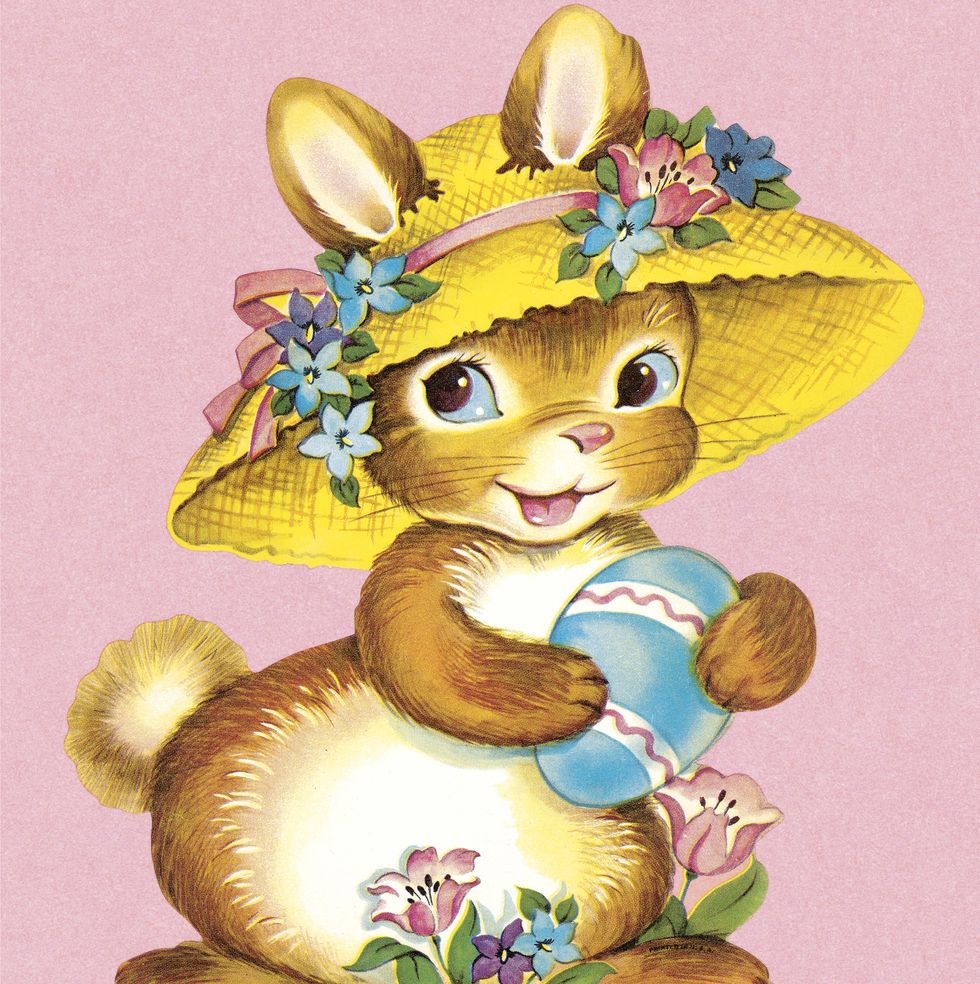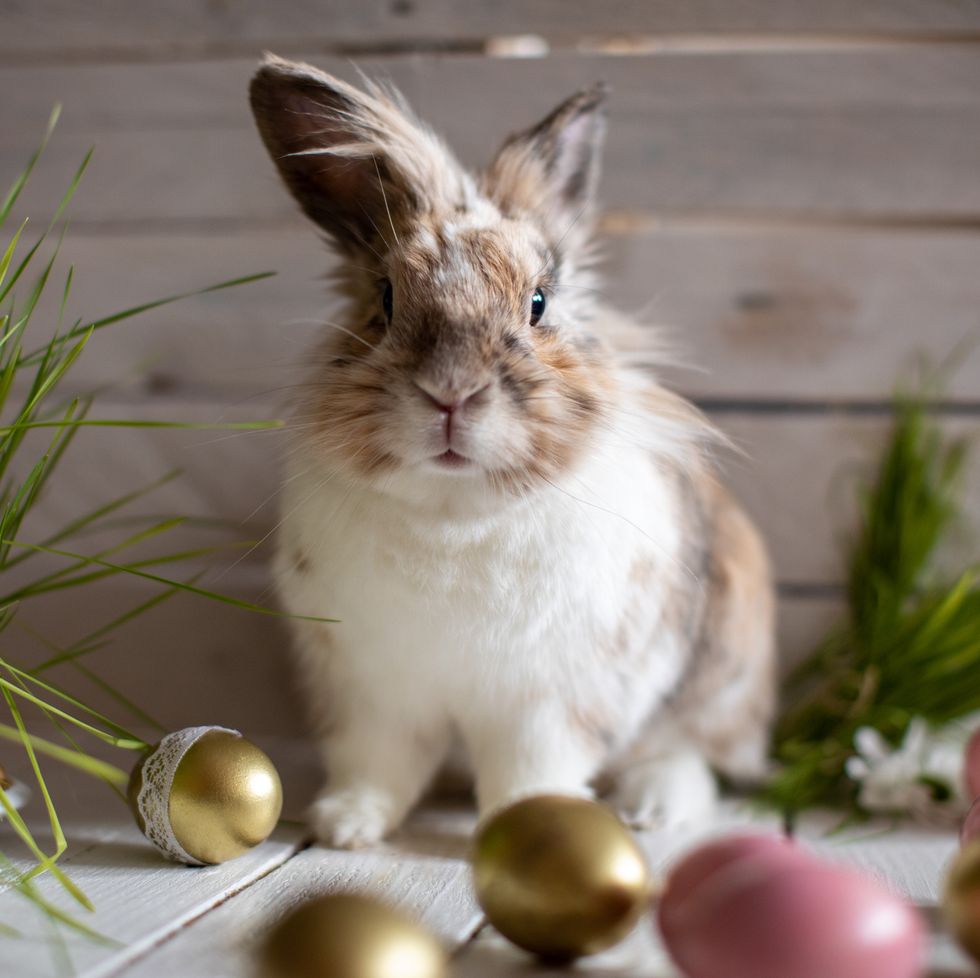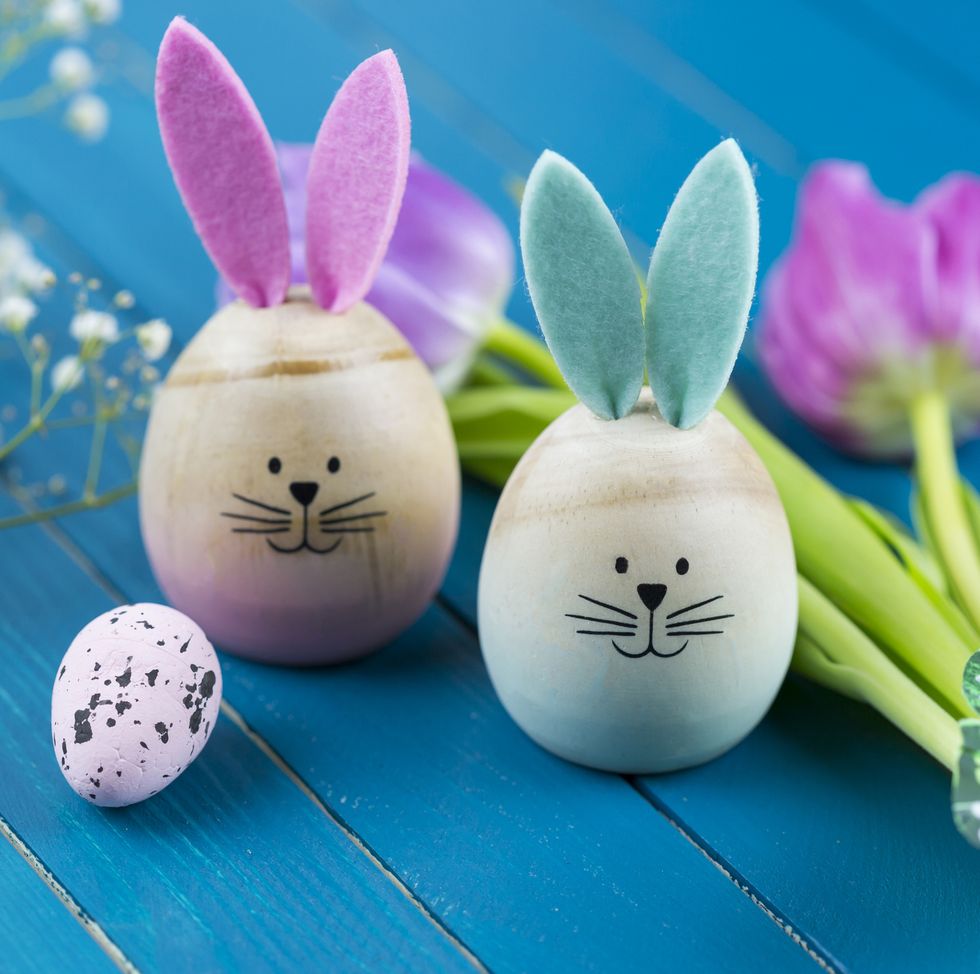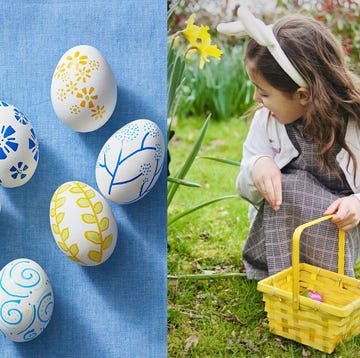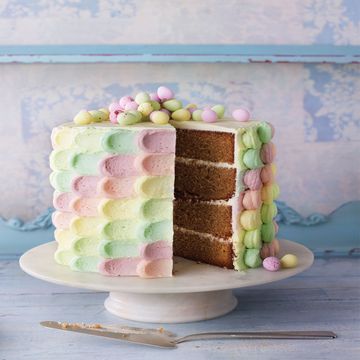This article was originally published on Good Housekeeping US.
For Christians, the Easter holiday signifies the end of the Lenten season and the resurrection of Jesus on Easter Sunday. But the spring celebration is so much more than that for young children. It's a day full of chocolate eggs, simnel cake, Easter baskets, and more. And while all those traditions come with questions from curious kids, there's none more prevalent than — where does the Easter Bunny come from?
While legend has told us that the Easter Bunny is a long-eared, furry, cotton-tailed creature who hops from house to house to deliver chocolate-filled baskets, there's more about his history that you might not be familiar with. In fact, the Easter Bunny's connection to this special Christian holiday goes back to pagan traditions.
Where does the Easter Bunny come from?
As Christians probably already know, the Bible makes no mention of a mythical hare who delivers eggs to children on the day of Jesus Christ's resurrection. So, why exactly has a rabbit become a prominent part of one of Christianity's most important celebrations of rebirth and renewal? One theory, according to Time, is that the symbol of the rabbit stems from the ancient pagan tradition on which many of our Easter traditions are based — the festival of Eostre, which honored the goddess of fertility and spring. The goddess's animal symbol was a rabbit, which has long traditionally stood for fertility due to their high reproduction rates.
Why does the Easter Bunny bring eggs?
Since rabbits are mammals (and give birth to live young), it might seem like a case of mistaken biology to say the Easter Bunny lays eggs on the holiday. Adding another miracle to the festivities, perhaps? The answer may lie in combining iconography. Eggs, just like the rabbit, have long been considered an ancient symbol of fertility, rebirth and new life, all associated with the springtime celebration of Easter!
From a Christian perspective, Easter eggs represent Jesus' resurrection and his emergence from the tomb. According to History.com, the tradition of decorating eggs for Easter may date back to the 13th century, when eggs were traditionally considered a forbidden food during the Lent season. That's why people decorated them as the fasting period came to an end, to make eating them an even more celebratory way to feast on Easter Sunday.
Of course, if you want to keep your Easter celebrations copacetic with the kids' science classes, you can always tell them the bunny just brings the eggs and leaves the laying to the chickens.
What does the Easter Bunny look like today?
Today, the Easter Bunny is usually depicted as a white rabbit with long ears, often wearing colorful human clothes.
Today, you can interact with the Easter Bunny in a variety of ways. You can take a picture with the rabbit in some places if you want a keepsake. If you visit TrackEasterBunny.com, you can follow along as he makes his delivies. There's even an app that allows you to text and call the Easter Bunny, who responds with pre-recorded messages.
Do other countries acknowledge the Easter Bunny?
Despite the prevalence of the bunny, it's not always a rabbit that brings the Easter eggs in countries outside of the UK. However, one exception is Japan, which has adopted the American version of the Easter Bunny into popular culture. In Australia, for example, the spring holiday is greeted with the Easter Bilby, an endangered rabbit-like marsupial native to that country. Other gift-bearing animals include the Easter Cuckoo in Switzerland and, in some parts of Germany, the Easter Fox or the Easter Rooster! In Sweden, it's an Easter witch named Påskkäring, who hails from an ancient cultural tradition. And in Russia, it's the dogs who lay the Easter eggs, not the bunnies! So, if you want to branch out this year, those are some places to start.

